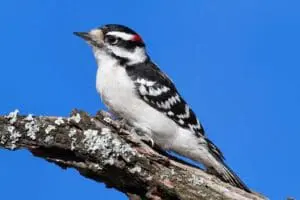
If you have ever noticed an annoying drumming noise on the outside of your house or found holes in your siding, you might have a woodpecker problem. This is no small issue, as woodpeckers can cause substantial damage to the exterior and siding of your home. Don’t worry though; we have solutions for you that will help you protect your siding and dryvit from a woodpecker. We decided to see why those pesky woodpeckers are eating your siding, and explain how to use stone veneer to replace your house’s siding that’s been damaged by woodpeckers.
What Kind of Woodpecker Might be Visiting?
There are a few species of woodpecker that are native to Illinois. Some of these species stay year-round, while others only show up in the warmer months. The following information will tell you about the various species you might see:
Downy Woodpecker: This is the most common woodpecker in our neck of the woods. It is small, measuring only 6 to 7 inches. The back of the male woodpecker’s head has a very distinct red patch. The Downy Woodpecker has a solid white belly and black wings, which are marked with white stripes.
Hairy Woodpecker: This is slightly bigger species of woodpecker. They measure 8 to 9 inches. The Hairy Woodpecker’s bill is longer and larger than the smaller Downy Woodpecker.
Northern Flicker: This species of woodpecker is significantly larger than the Downy Woodpecker. It measures 12 to 13 inches. Their bodies have black spots on the back and belly region and they have a large black patch on their chest. Their bodies; however, are mostly brown.
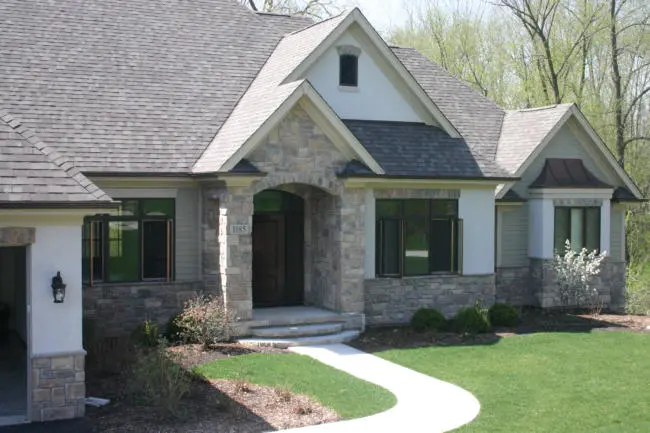
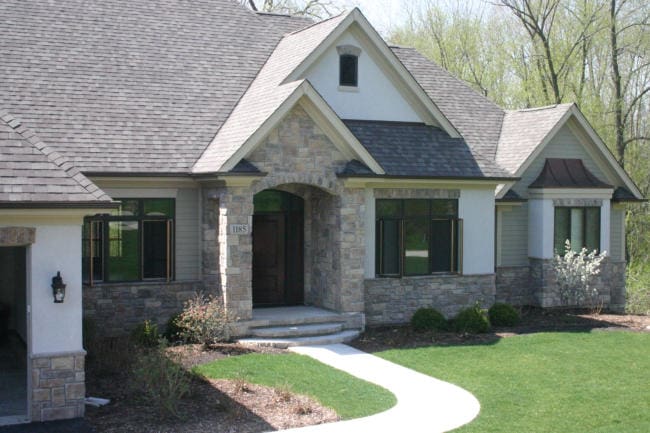
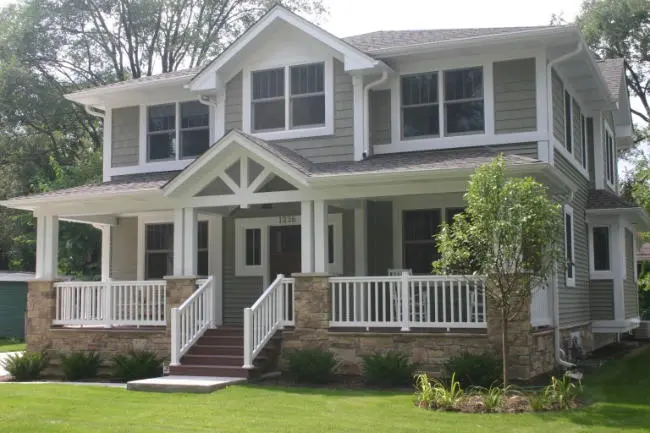
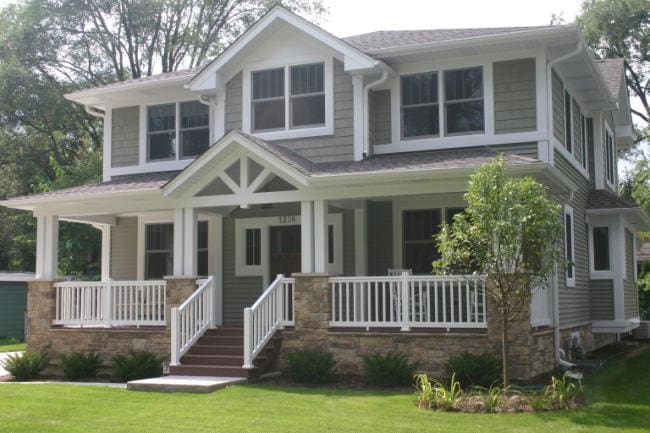
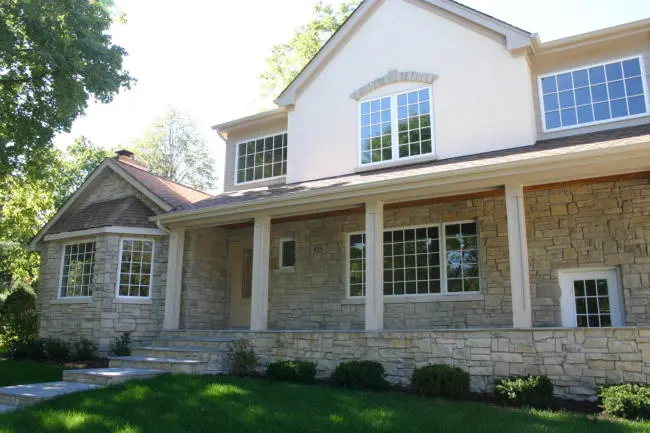
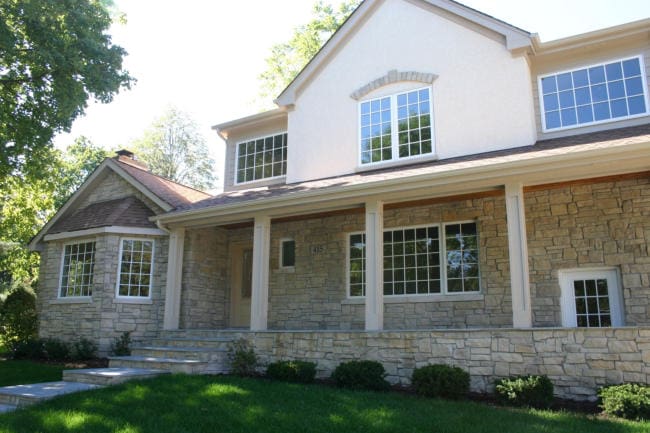
Why Do Woodpeckers Peck At Your House?
Another issue to consider when dealing with a woodpecker invasion is determining why woodpeckers are targeting your house in the first place. The following are the most common reasons why woodpeckers peck:
Food: If your home has wood shingles or siding, it can harbor insects, such as ants, spiders, caterpillars or larvae. Consequently, sometimes, woodpeckers will peck siding to find these insects as they are a common food source for them.
Territory: If your home doesn’t have wooden siding–if it instead has stone veneer– and you are still dealing with a woodpecker, they might be marking their territory. Woodpeckers use their drumming to attract a mate and to mark their territory.
Nesting: The final reason you might be hosting unwanted guests in the form of woodpeckers is nesting. Although woodpeckers prefer large hollowed trees with softened centers to make their nests, they will drill into the siding of a house to make a home if they cannot find a suitable location.
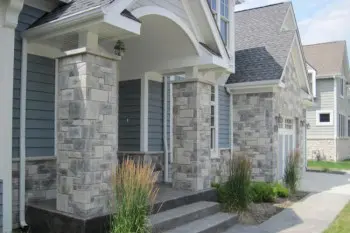
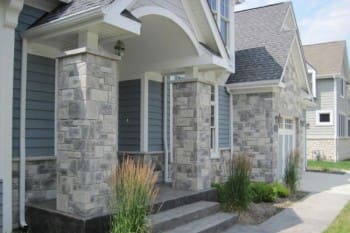
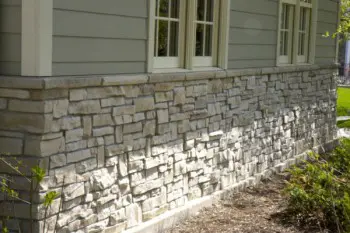
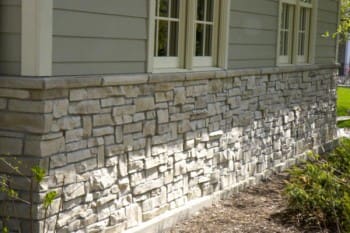
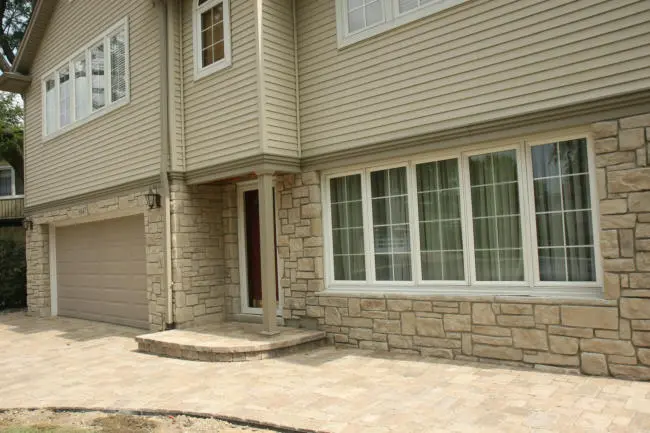

What to do About Woodpeckers Eating At Your Siding:
Now that you know what type of woodpecker has invaded your home and the reasoning behind the invasion, you likely have just one more question, that being what to do about it. Unfortunately, that question isn’t easily answered. Due to the fact that getting rid of woodpeckers is a notoriously hard task, there have even been studies created just to find a solution. One such study was completed by Cornell Lab. It tested common deterrents to determine which prevented woodpecker damage the most efficiently. The methods tested included the use of life sized plastic owls, reflective streamers, roost boxes, plastic eyes on fishing lines, suet feeders and a sound system that broadcasted woodpecker distress calls and that of a hawk. According to this study, only one method worked consistently as a deterrent, that being streamers. The shiny coating and constant movement of the streamers seems to deter the woodpeckers more effectively than any other method.
Another great solution is to replace your damaged siding with stone veneer. Birds are likely to want little to do with stone veneer siding. Stone is a versatile, easily installed option for homes. Our stone veneer can be custom colored, and there are many, many stone veneer styles to choose from. Stone can often go right over the existing siding, stopping woodpeckers from the start. Stone veneer is durable, weather resistant and can be installed often in just a few days.
Finding your exterior siding or dryvit damaged as a result of a pesky bird can be very frustrating. Let us know if we can help you decide if stone veneer could help you stop damage from woodpeckers on your home’s exterior. Fill out this form and send us a message or call 847-996-6850 for a free estimate for your exterior stone siding.

